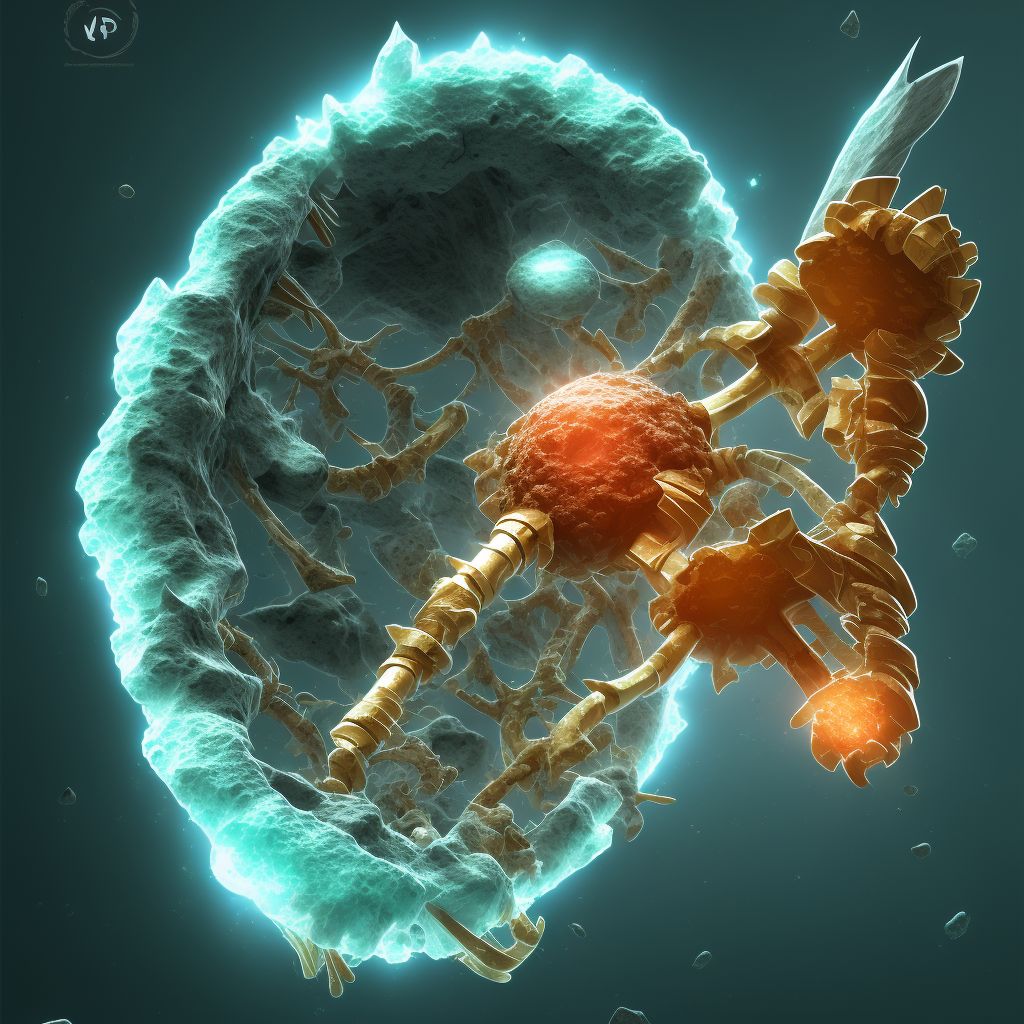
Displaced segmental fracture of shaft of left tibia, subsequent encounter for closed fracture with routine healing Save
ICD-10 code: S82.262D
Disease category: S82.262: Displaced segmental fracture of shaft of left tibia
Displaced Segmental Fracture of Shaft of Left Tibia: Subsequent Encounter for Closed Fracture with Routine Healing
A displaced segmental fracture of the shaft of the left tibia is a severe injury that requires immediate medical attention. This type of fracture occurs when the tibia bone breaks into two or more pieces, causing misalignment and potential damage to the surrounding soft tissues. After receiving initial treatment, subsequent encounters for closed fracture with routine healing are essential to monitor the progress of the healing process.
During the subsequent encounters, healthcare professionals assess the patient's condition and ensure that the fracture is healing properly. Routine check-ups involve physical examinations, X-rays, and other diagnostic tests to evaluate the alignment and stability of the tibia bone. These encounters also allow healthcare providers to address any concerns or complications that may arise during the healing process.
When treating a displaced segmental fracture of the shaft of the left tibia, the primary goal is to promote proper bone healing and restore functionality. Non-surgical methods, such as immobilization with a cast or splint, are typically employed to ensure the fractured bone remains in the correct position. Additionally, patients may be advised to avoid weight-bearing activities and use crutches or other assistive devices to facilitate mobility while allowing the bone to heal.
- Physical Examinations: During subsequent encounters, healthcare professionals carefully examine the patient's leg, evaluating the range of motion, assessing any signs of swelling or tenderness, and checking for any abnormal sensations.
- X-rays: X-ray images are crucial in monitoring the healing progress of the tibia bone. They provide detailed views of the fracture site, allowing healthcare providers to determine if the bone is aligning properly and if any additional treatment is required.
- Diagnostic Tests: In some cases, healthcare professionals may recommend additional diagnostic tests, such as CT scans or MRI, to get a more comprehensive understanding of the fracture and its impact on the surrounding tissues.
Subsequent encounters for closed fracture with routine healing play a vital role in ensuring a successful recovery for patients with a displaced segmental fracture of the shaft of the left tibia. Regular monitoring and appropriate interventions throughout the healing process help prevent complications and ensure the bone heals in the correct position. It is essential to follow the healthcare provider's guidance and attend all scheduled follow-up appointments to ensure the best possible outcome.
Treatment of Displaced segmental fracture of shaft of left tibia, subsequent encounter for closed fracture with routine healing:
Treatment Options for Displaced Segmental Fracture of the Shaft of Left Tibia
A displaced segmental fracture of the shaft of the left tibia can be a challenging injury to treat. It occurs when the tibia bone breaks into two or more pieces, often resulting from a high-impact trauma. The subsequent encounter for closed fracture with routine healing involves addressing the fracture af...
To see full information about treatment please Sign up or Log in